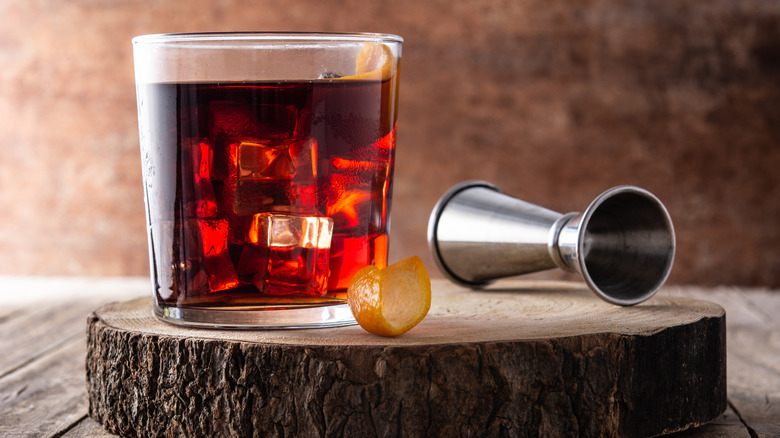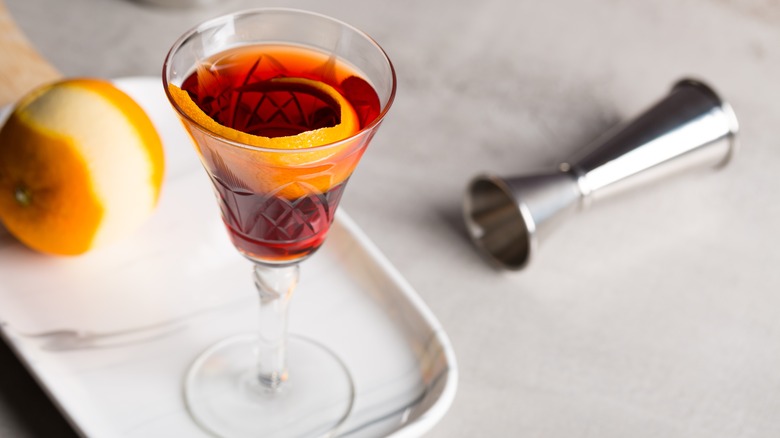Boulevardier: The 1920s Bourbon Cocktail With An Iconic Backstory
Aficionados of beverages featuring a robust and bitter flavor profile will already be acquainted with the hard-hitting Boulevardier cocktail. The herbal, spicy notes of Campari and the dark fruit sweetness of red vermouth combine to make a perfect foil for the sweet and toasty bourbon comprising this drink, simply served on ice. No mixer here. This is an alcohol-forward tipple made for sipping by anyone looking for a buzzy, rich flavor.
The popularity of the iconic 1920s cocktail with the French name is credited to an American in Paris, Harry McElhone. Like many bartenders, McElhone found refuge in France from anti-alcohol legislation during Prohibition, eventually founding Harry's New York Bar in Paris. Entranced by European aperitifs such as Campari, expat mixologists combined the best of continental spirits and New World alcohols, creating unique concoctions to take advantage of the new flavor palate. Thus, American whiskey was added to Italian bitters and European sweet herbal vermouth, creating this balanced drink that was introduced to Americans in 1927.
Americans in Paris, drinking
While McElhone gets a nod for including the Boulevardier in his classic bar recipe book entitled "Barflies and Cocktails," it was another American who purportedly originated the formula — publisher of the Boulevardier magazine, Erskine Gwynne. Gwynne was a socialite who embodied the essence of the French term "boulevardier," which described a fashionable, sophisticated man-about-town. A member of the wealthy Vanderbilt family, Gwynne's signature drink was an equal parts mixture of bourbon, Campari, and sweet vermouth, which McElhone gladly mixed up at Harry's New York Bar.
If the Boulevardier seems like a Negroni with the simple substitution of gin for whiskey, that's not wrong. However, the Negroni originated independently in Italy in roughly the same era, probably as a variation of an Americano cocktail. And while the Negroni is an equal parts mixture of its signature spirits like the original Boulevardier formula, today, many bartenders prefer to bump up the bourbon ratio a bit. This softens the depth of bitterness in a Boulevardier, producing a somewhat rounder mouthfeel thanks to the honey and maple notes bourbon brings. We think Gwynne would approve of the sophisticated adaptation.

